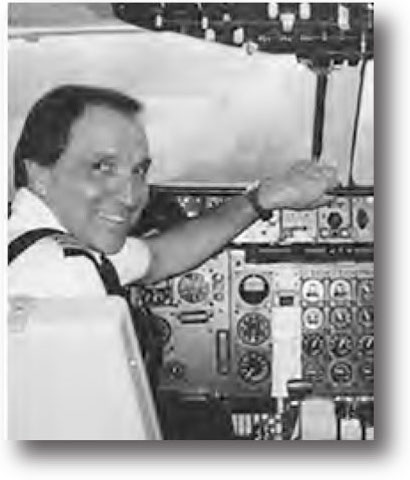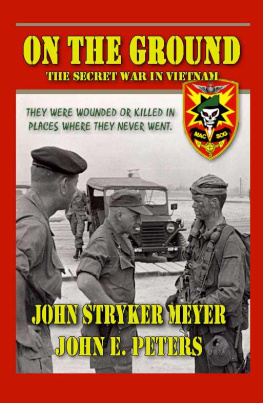THEY CALLED IT NAKED FANNY
2016 Scott Harrington
Published by Hellgate Press
(An imprint of L&R Publishing, LLC)
All rights reserved. By payment of the required fees, you have been granted the non-exclusive, non-transferable right to access and read the text of this e-book on screen. No part of this text may be reproduced, transmitted, downloaded, decompiled, reverse engineered, or stored in or introduced into any information storage and retrieval system, in any form or by any means, whether electronic or mechanical, now known or here-inafter invented, without the express wtitten permission of L&R Publishing, LLC.
Hellgate Press
PO Box 3531
Ashland, OR 97520
email: sales@hellgatepress.com
Editor: Harley B. Patrick
Cover & Interior Design: L. Redding
Library of Congress Cataloging-in-Publication Data available from the publisher on request
ISBN: 978-1-55571-838-1

This book is dedicated to the memory of Duane Whitney Martin. Born January 2, 1940, Duane was a 1st Lieutenant in the United States Air Force, assigned to Detachment 1 of the 38th Aerospace Rescue and Recovery Squadron at Nakhon Phanom Royal Thai Air Force Base, Thailand. On September 20, 1965, his rescue helicopter was shot down over North Vietnam. He made his way across the border into Laos where he was captured by the Pathet Lao. Following his escape from a Laotian prisoner of war camp, he was brutally attacked and died July 3, 1966. He was one of the nearly 60,000 Americans who lost their lives during the Vietnam War. His name is enshrined on Panel 2E, Line 91 of the Vietnam Wall in Washington, D.C. He was one of the men of Naked Fanny: He was one of us.
Duane was posthumously promoted to captain and, since his remains were not recovered, his name is inscribed on the Courts of the Missing at the Honolulu Memorial. There is also a memorial headstone at Fort Logan National Cemetery in Denver, Colorado.
Left to mourn his death were his young widow and two small daughters. Jack Fellows, a renowned member of the American Society of Aircraft Artists, thought enough of his cousins late husband to establish the Captain Duane Whitney Martin, USAF Award, an annual $500 award honoring the best art commemorating aviation that reflects events during the war in Southeast Asia.

Foreword
W HEN OUR F-105D THUNDERCHIEF SqUADRON arrived in the theater in early 1965, we were originally based at Da Nang Air Base (Republic of Vietnam). We immediately became familiar with NKP, a VOR (Visual Omni Range) station in northeastern Thailand. It was the only VOR that was close enough to Laos to be used as a navigation aid when going to targets in Laos and later into North Vietnam. Within a month we were moved to Korat, Thailand. From that base we started flying missions into North Vietnam, an operation called Rolling Thunder. We always refueled on a radial off the NKP VOR and took our original headings to the targets from that VOR.
We saw the small air base below but didnt originally realize that (many of) the SAR helicopters that would provide our hope for rescue were stationed there. It didnt take long for us to understand how important that base would become and how many lives would be saved because of the tremendous rescue efforts that would originate from that single location known as Naked Fanny.
The stories between the covers of this book bring to life the valor and courage needed day in and day out and animate the cold facts hidden in mission statements for almost half a century.
Finally, the first-person accounts bear witness to the enormous dangers and raw emotions behind the military after-action reports written by these men of steel. It became especially important to me on July 27, 1965, when I found myself on the ground in North Vietnam and in serious need of the SAR professionals at NKP if I was ever to see my wife and two daughters again.
Its hard to put into words how I feel about these brave individuals doing their jobs to their utmost that ended up with a successful rescue under horribly dangerous conditions. All of the F-105 pilots knew that most of the rescue efforts started at NKP so we held that location in special esteem. Being on the ground that close to Hanoi; with North Vietnamese soldiers clamoring in the elephant grass looking for me; and firing volleys of gunfire to get me to bolt is horrifying beyond description.
I had been involved in rescue attempts, both successful and unsuccessful, during my tour and I knew my situation was grim. It was two Navy A-1 pilots, Ed Greathouse and Holt Livesay, who located me and brought George Martins helicopter, based at NKP, to my position. I can never describe how I felt when I saw that chopper coming in over me in spite of the ground fire. As you will read later in this book, we had our problems that day with one of the chopper engines and with the sling motor, but they persevered and carried me to a dry rice paddy; set me down and landed next to me so I could get in.
All of this was done under firegunfire that would be attested to by a number of holes in the fuselage. What unbelievable courage that took. We were complete strangers but it didnt matter; they did their job, they saved my life! Coming out of Naked Fanny, George Martin, the chopper pilot; Orville Keese, the co-pilot; Curtis Pert, the crew chief and Gordon Thayer, the PJ, risked their lives that day to rescue someone they didnt know. I am extremely proud to have been associated with this crew and all those in the SAR community that continually did this enormously important work.
This would be repeated time after time, as witnessed to in the pages of this book, over the next number of years with the same exhibition of bravery, selflessness and valor. Sadly, sometimes their efforts would prove to be fatal. Where do we get such men?
Frank J. Tullo

F RANK TULLO JOINED THE AIR FORCE in October 1959, serving for seven years as a fighter pilot flying F-100s and F-105s. This included a tour in Vietnam (Thailand) where he was shot down on the outskirts of Hanoi and rescued by helicopter.
Tullo joined Continental Airlines as a pilot in 1966 and spent thirty-three years with them until he retired in 1999. During his career with
Continental, he flew the Boeing 707, 727, DC-10, DC-9, MD-80, Boeing 757/767, Sabreliner and Lear Jet. While at Continental, Tullo held the positions of: Flight Engineer Instructor, Flight Instructor, Boeing 727 Fleet Manager, Director of Human Factors (CRM), Chief Pilot of Los Angeles and Honolulu, and Vice President of Flight Operations.
He is currently a part-time faculty member at the University of Southern California. Mr. Tullo also has an aviation consultant business specializing in human factors, working for domestic and foreign airlines including United Space Alliance, the organization that currently maintains the Space Shuttle. He currently flies for the Civil Air Patrol flying light airplanes on Search and Rescue missions in Southern California.















